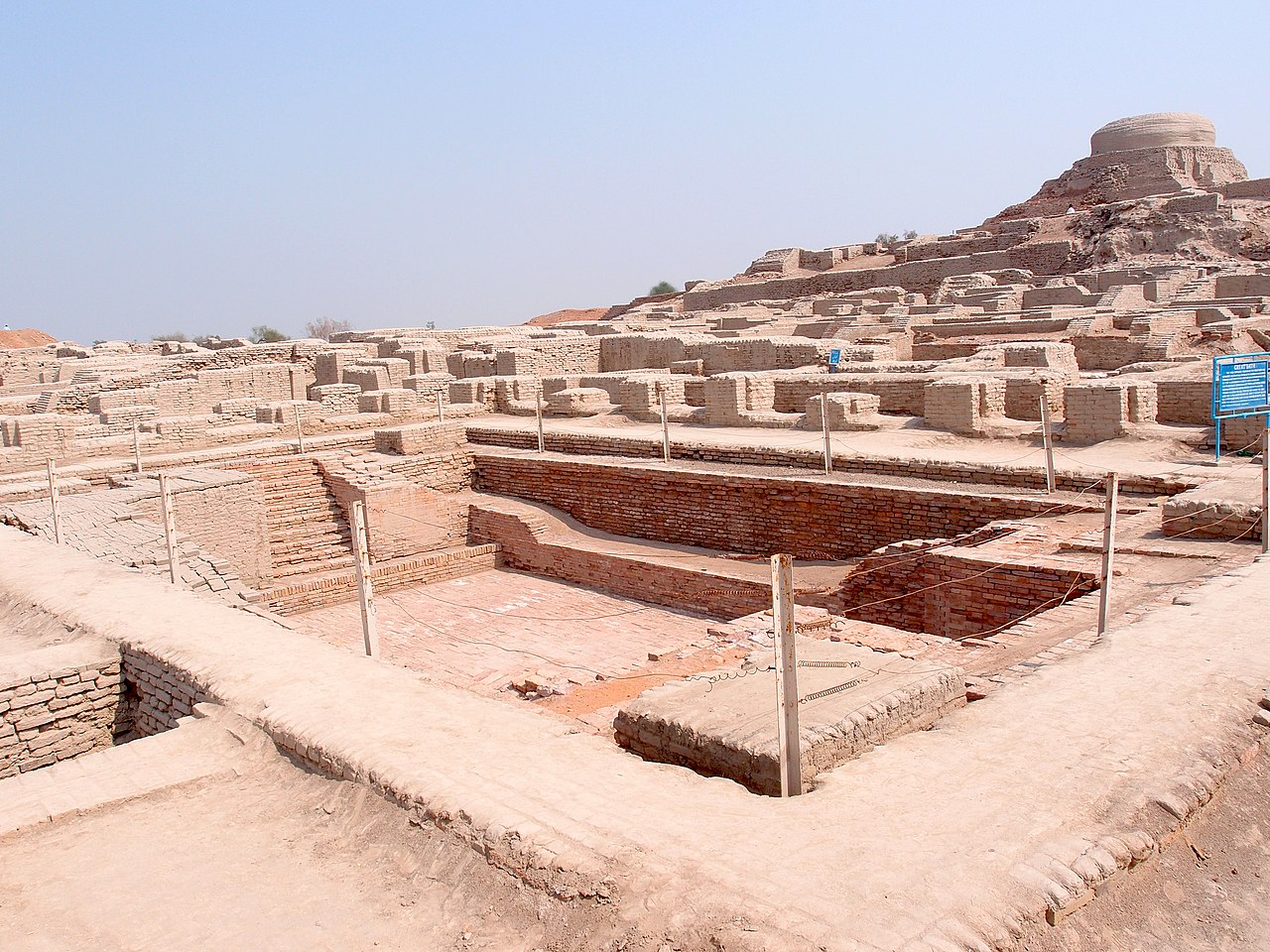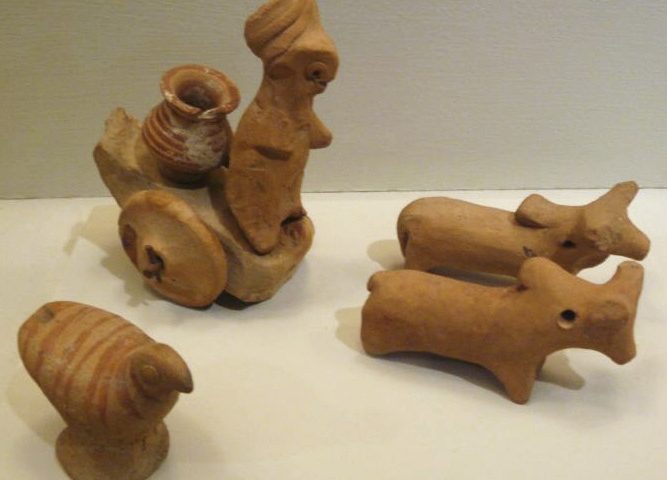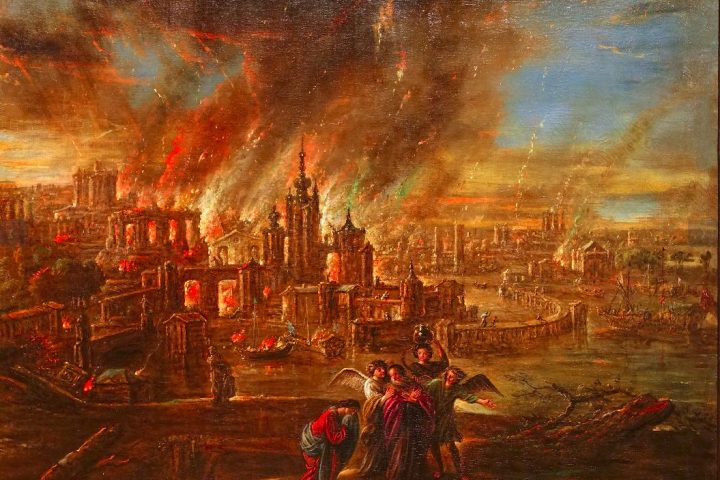Mohenjo-Daro is the lost city of the Indus Valley Civilization, with a history that fascinates archeologists like no other. Here are the 10 interesting facts about Mohenjo-Daro, an ancient and iconic city that thrived during the Indus Valley Civilization.
The lost city of Mohenjo-Daro was a part of the Indus Valley Civilization and is located in the Sindh Province of Pakistan, specifically in the district of Larkana City (Sindh).
Built around 2500 BCE, it was the largest settlement of the historic Indus Valley Civilization and was also one of the world’s earliest cities.
However, as one continues to explore the lost city, the discovery of intriguing aspects about Mohenjo-Daro continues to emerge.
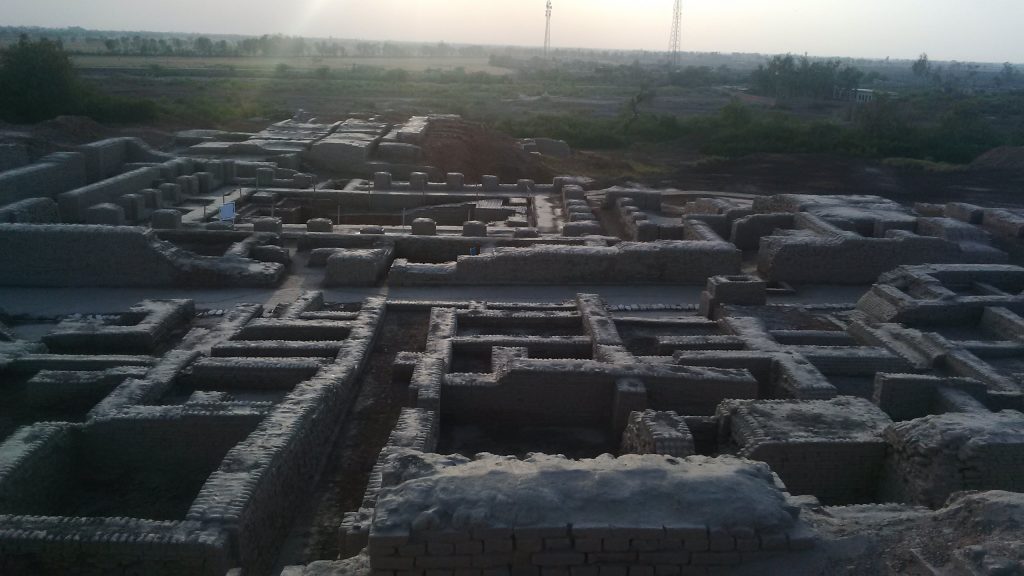
Gaffar772, CC BY-SA 4.0 https://creativecommons.org/licenses/by-sa/4.0, via Wikimedia Commons
If you want to dive deeper and learn the interesting facts about Mohenjo-Daro city, then stick to this article’s end.
10 Interesting Facts About Mohenjo-Daro: Diving Deeper
Mohenjo-Daro is an astonishing ancient city that was part of the great and monumental Indus Valley Civilization that was known for its advanced (for its time) and unique ways of living as a society.
While the name of the city, to its exact nature, is unknown, it was popularized as Mohenjo-Daro after the discovery of the city.
The lost city was the highlight reel of the Indus Valley Civilization, being home to approximately 40,000 people.
Mohenjo-Daro was built and formed in the 26th Century BCE and continued to prosper until the 17th Century BCE and then eventually came to an end.
Today, what’s left of the city, is mounds and ruins, situated on the right bank or west of the lower side of the Indus River that connects to the Larkana City or District of Sindh (Pakistan) and lies on the Pleistocene Ridge (in the flood plain of the Indus).
There’s a lot more to the legendary city, which the article will talk about.
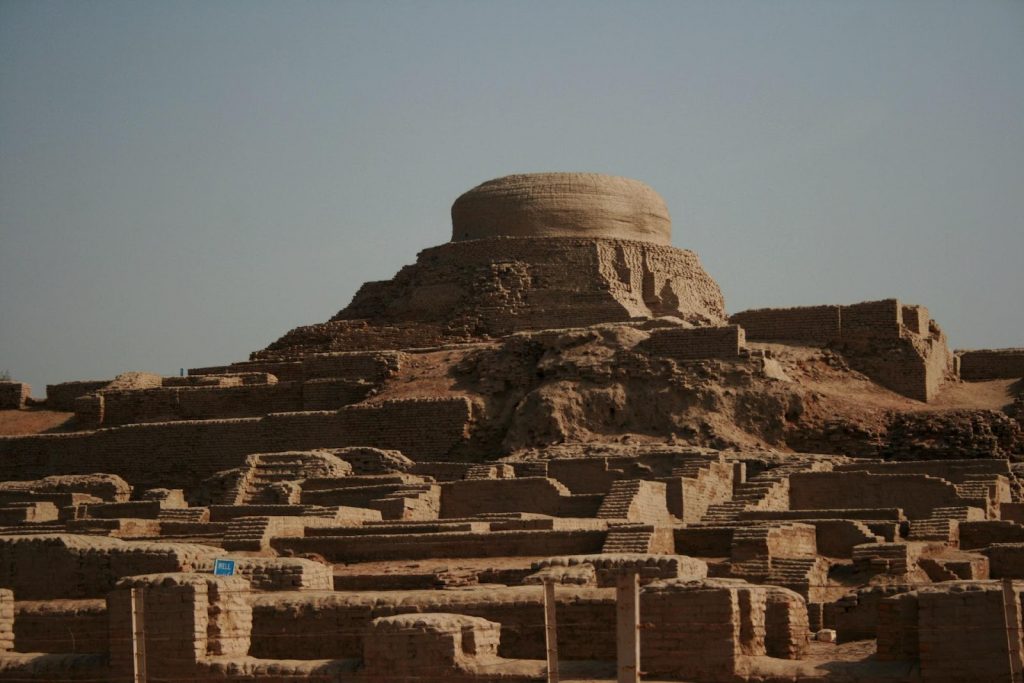
Fact #1 – Mohenjo-Daro is Not The Ancient City’s Real Name
As mentioned in the overview, the name ‘Mohenjo-Daro is not the city’s real name and its real name is not known.
However, there’s speculation by archeologists and site excavators that the name of the city may have well been ‘Kukkuṭārma,’ which means the city of ‘Cockerel’ or ‘Kukkuta.’ This name was suggested because of the significance of Cock fighting in Mohenjo-Daro, and treating the activity as a ritual.
The name Mohenjo-Daro was bestowed on the city as a modern site name that may be interpreted or referred to as ‘Mound of The Dead Men.’
Fact #2 – City Ruins Were Not Documented For Up To 3,700 Years After Decline
Another interesting fact about the ancient city of Mohenjo-Daro is that the city was not discovered and documented until 3,700 years after the collapse of the ancient city.
An Indian Archeologist, Rakhal Dash Banerji visited the modern-day Mohenjo-Daro between 1919 and 1920, only to discover the lost city. He was convinced of the city’s antiquity after discovering monumental artifacts, pointing to the prehistoric existence of the great city of the Indus Valley Civilization.
After that, many excavations were conducted in the city, adding more to its history and heritage.
Fact #3 – Mohenjo-Daro Had Multi-Story Buildings
Mohenjo-Daro was one of the most astonishing cities of the Indus Valley Civilization and was way ahead of its time, in terms of infrastructure.
The ancient city was comprised of many multi-story buildings that were functionally and purposefully built to accommodate the sophisticated lifestyle of its inhabitants.
Their multi-story buildings and constructions featured large alleys with individual restrooms and toilets, along with a central courtyard that was surrounded by different rooms.
The rich or upper-class people of the city would even have multi-purpose, triple-story buildings.
Fact #4 – The Great Bath Held More Spiritual Importance Than Just A Public Pool
If you have read about Mohenjo-Daro, then chances are that you may have also come across or heard about ‘The Great Bath,’ which was a purpose-built public pool in the city.
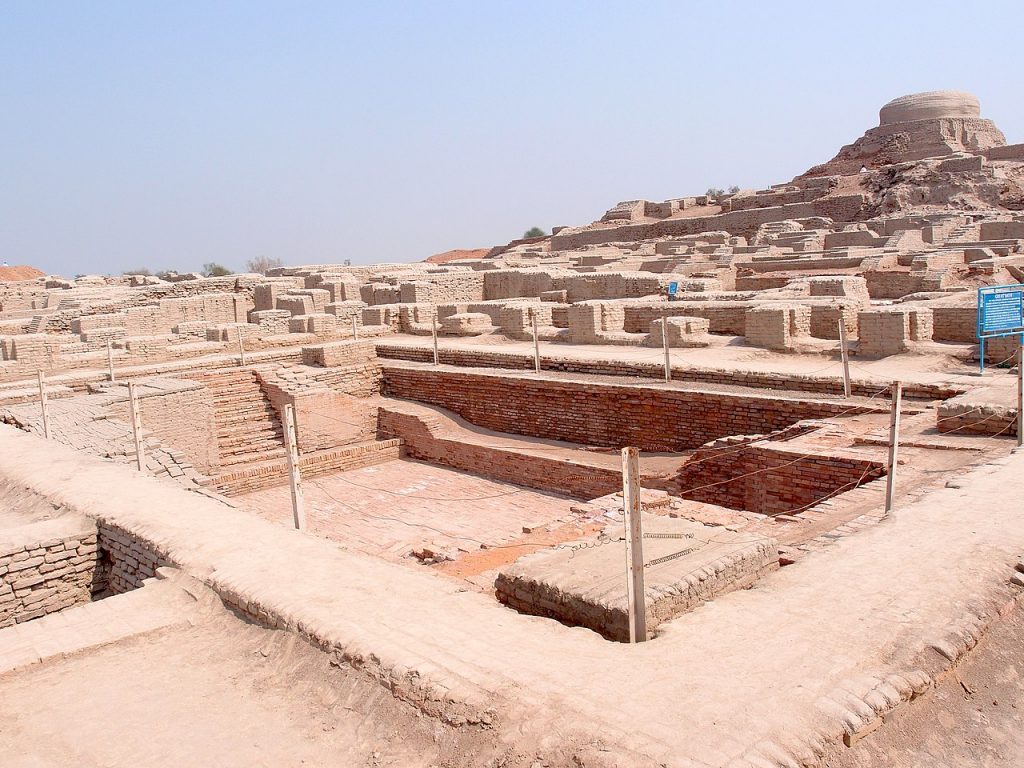
View of the site’s Great Bath, showing the surrounding urban layout
By Saqib Qayyum – Own work, CC BY-SA 3.0, https://commons.wikimedia.org/w/index.php?curid=31519718OLYMPUS DIGITAL CAMERA
Located in the main Citadel Complex of the ancient city, the public pool, or the Great Bath, was not just a regular public pool for people to bathe in. Instead, it held spiritual significance for the inhabitants of Mohenjo-Daro.
Being a structural masterpiece on its own, the Great Bath of Mohenjo-Daro is believed to have been a spiritual bath that would cleanse the inhabitants of all their impurities.
Rituals revolving around the Great Bath are also believed to have been practiced involving the cleansing of humans from the sacred water that was housed inside the iconic pool space. This may be further validated by the fact that there are large entrances located near the North and South of the complex around the Great Bath. However, it is still unknown who had the access to these entrances but are believed to be the ritual entrance gateways for the Great Bath.
Fact #5 – The People Of The City Were Fond Of Wearing Jewelry And Accessories
While jewelry has remained an interesting aspect of different prehistoric societies but the people of Mohenjo-Daro seemed to have been fond of wearing vintage jewelry pieces at that time.
The remains and ruins of the city pointed out the unique lifestyle of the inhabitants of Mohenjo-Daro, indicating that they loved wearing ornaments, which they would make from precious metals and stones.
The iconic and exquisite seven-stranded necklace, made from semi-precious stones and gold, was also excavated from the site of Mohenjo-Daro.
Fact #6 – The Society Of Mohenjo-Daro Practiced Matriarchy
It’s interesting to note that the inhabitants of Mohenjo-Daro followed matriarchy and hailed women to be leaders of the household.
This fact was validated by the discovery of various terracotta figurines of the Mother Goddess, Shakambari, which pointed out the cultural beliefs of the people of Mohenjo-Daro, indicating female prowess and dominance.
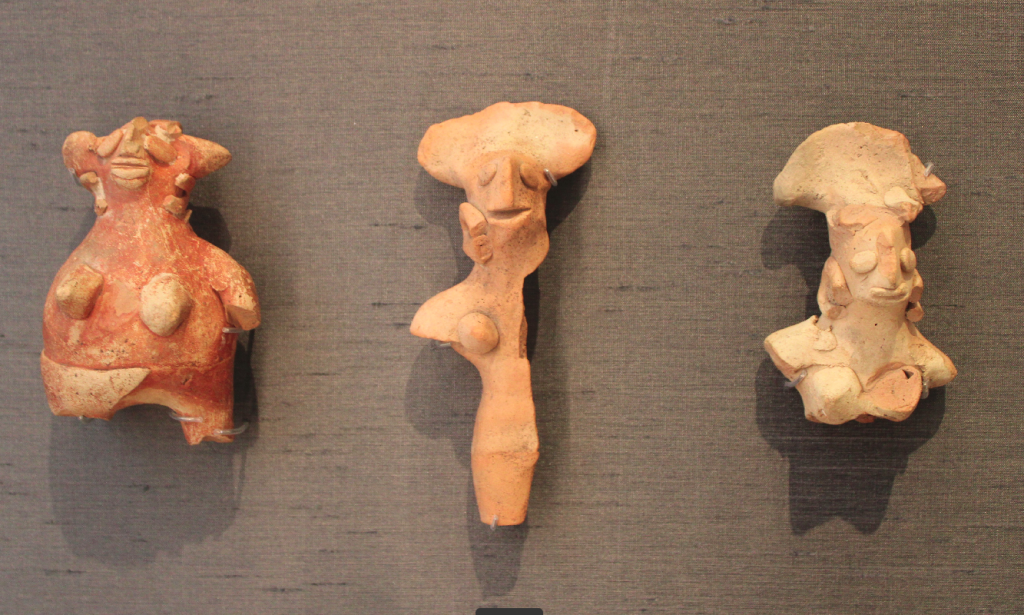
Zunkir, CC BY-SA 4.0 https://creativecommons.org/licenses/by-sa/4.0, via Wikimedia Commons
Fact #7 – Mohenjo-Daro’s Mythical Massacre
While many historians have a conflicting belief about the massacre or calamity that took place in Mohenjo-Daro that is believed to have led to the destruction and annihilation of the ancient city, it remains uncertain whether the massacre was a result of an invasion or a natural disaster struck the ancient city making it go into the abyss.
Excavating ruins of the site indicate the possibility of a ferocious natural disaster like a devastating flood or a massive earthquake. Recent studies also indicate the end of Mohenjo-Daro to be a result of Climate Change.
However, some believe that the Aryan invasion of Mohenjo-Daro was the reason why the ancient city plundered into complete non-existence. As historians found skeletons inside the city complex, which led some of them to believe that the demise of the great city or the massacre that happened in Mohenjo-Daro was a result of external invasion.
Fact #8 – The Mode Of Transport Was Horses and Bullock Carts
Archeologists discovered a clay-based bullock cart at the site of Mohenjo-Daro that potentially showed how the people of Mohenjo-Daro traveled or commuted between places.
Along with that, white horses were also used for the daily commute and transport in the Indus Valley Civilization, meaning that horses, along with the bullock carts were used by the people of Mohenjo-Daro to travel and commute.
Fact #9 – Mohenjo-Daro Had An Advanced Toiletry And Water Sewage System
It’s quite hard to picture a city that dates back to the 17th Century BCE with an advanced and dedicated water sewage system along with individual toilets.
However, the city had an advanced (for its time) water sewage system that had a high level of sophistication and urban planning. The ruins of the city show how the water sewage system, along with the waste management system was well thought out and spread across the entire city.
What’s more interesting to note is that the drains of the system were also covered to ensure feasibility and hygiene.
Houses inside Mohenjo-Daro were built with dedicated toilets and baths that linked with the water sewage system.
Fact #10 – The People Of Mohenjo-Daro Worshipped A Figure That’s Similar to Shiva
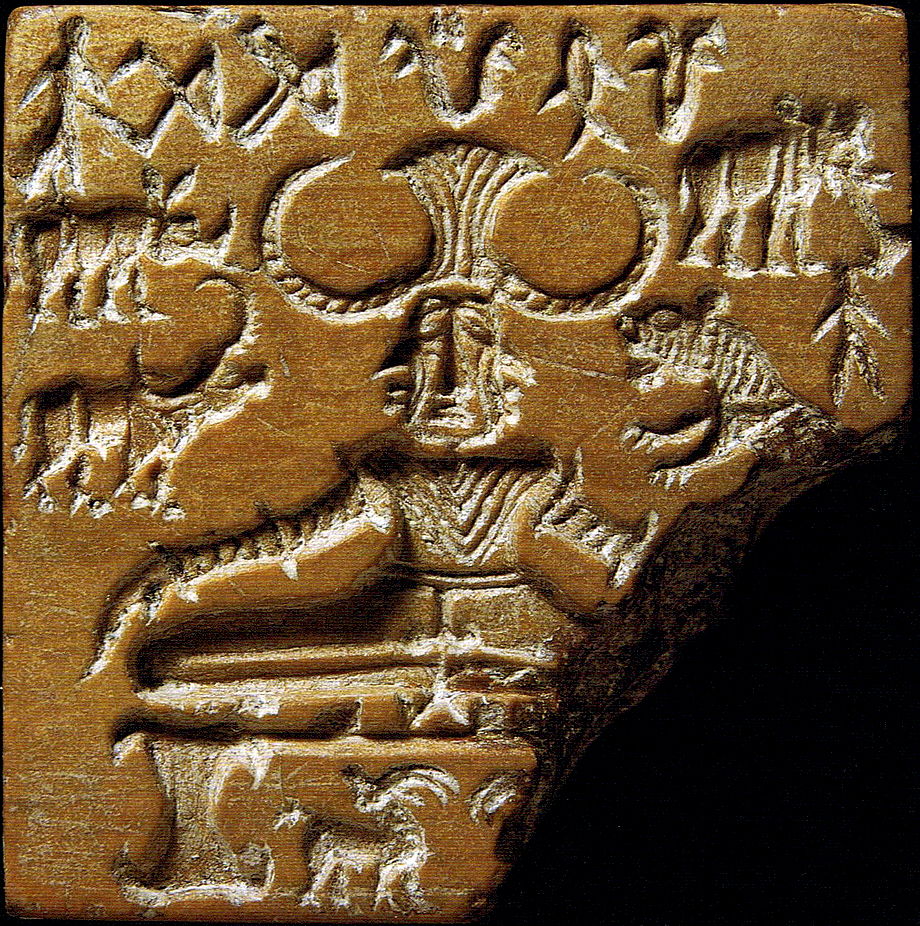
The Pashupati Seal discovered from the site of Mohenjo-Daro suggests that the people of Mohenjo-Daro worshipped a figure that appears to fall in line with the physical characteristics of Shiva.
This is affirmed by the picture of the Pashupati Seal that showcases a similar yogic posture to that of modern-day Shiva.
The Pashupati Seal also shows drawings of wild animals around the figure, also suggesting that the person in the figure was considered to be a Protector or Tribal Head.
Good To Know Fact: the timeline of BCE or ‘Before the Common Era’ is actually in reverse, in terms of annotations. This means that the 26th Century BCE came before the 19th Century BCE.
Final Thoughts
Mohenjo-Daro was an astonishing city of the great Indus Valley Civilization, and today, it serves as one of the most insightful and unique archeological and historic sites of the world.
The site and modern-day excavations continue to impress historians and archeologists.
Probably, with time, more mysteries and facts will continue to be uncovered as more excavations and exploratory visits take place.
